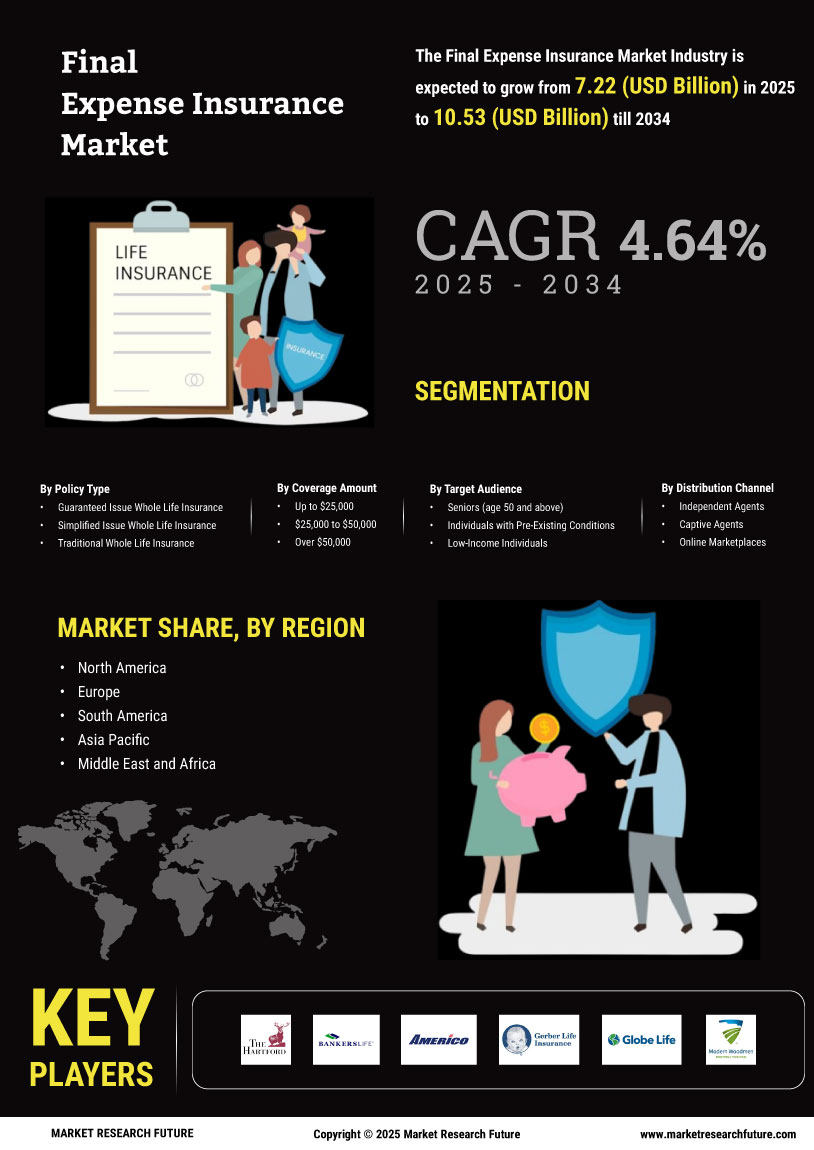The Final Expense Insurance Market is characterized by a competitive landscape that is increasingly shaped by innovation, digital transformation, and strategic partnerships. Key players such as Lincoln Heritage Life Insurance Company (US), Mutual of Omaha (US), and AIG (US) are actively redefining their operational focus to enhance customer engagement and streamline service delivery. Lincoln Heritage Life Insurance Company (US) has positioned itself as a leader in customer service, emphasizing personalized insurance solutions that cater to the unique needs of its clientele. Meanwhile, Mutual of Omaha (US) has been investing in technology to improve its underwriting processes, thereby enhancing efficiency and customer satisfaction. AIG (US) appears to be focusing on expanding its product offerings to include more flexible final expense plans, which may attract a broader demographic, particularly among younger consumers seeking affordable options for end-of-life expenses.
The business tactics employed by these companies reflect a moderately fragmented market structure, where competition is driven by localized strategies and customer-centric approaches. Companies are increasingly localizing their services to better meet regional demands, which may enhance their market penetration. The collective influence of these key players suggests a dynamic environment where innovation and customer service are paramount, potentially leading to a more competitive marketplace.
In August 2025, Lincoln Heritage Life Insurance Company (US) launched a new digital platform aimed at simplifying the application process for final expense insurance. This strategic move is likely to enhance customer experience by reducing the time and complexity associated with obtaining coverage, thereby positioning the company favorably against its competitors. The emphasis on digital solutions may also reflect a broader trend within the industry towards embracing technology to meet evolving consumer expectations.
In September 2025, Mutual of Omaha (US) announced a partnership with a leading fintech company to integrate AI-driven analytics into its underwriting process. This collaboration is expected to streamline operations and improve risk assessment, which could lead to more competitive pricing and better service delivery. The integration of AI technology may not only enhance operational efficiency but also provide a significant competitive edge in a market that increasingly values data-driven decision-making.
In July 2025, AIG (US) expanded its final expense insurance offerings to include customizable plans that allow policyholders to adjust coverage amounts based on their financial situations. This strategic initiative is indicative of a shift towards more personalized insurance solutions, which may resonate well with consumers seeking flexibility in their financial planning. By catering to individual needs, AIG could strengthen its market position and attract a diverse customer base.
As of October 2025, the competitive trends within the Final Expense Insurance Market are increasingly defined by digitalization, sustainability, and the integration of advanced technologies such as AI. Strategic alliances are playing a crucial role in shaping the current landscape, enabling companies to leverage each other's strengths and enhance their service offerings. Looking ahead, it appears that competitive differentiation will evolve from traditional price-based competition to a focus on innovation, technology, and the reliability of supply chains. This shift may ultimately redefine how companies engage with consumers and position themselves in a rapidly changing market.
























Leave a Comment